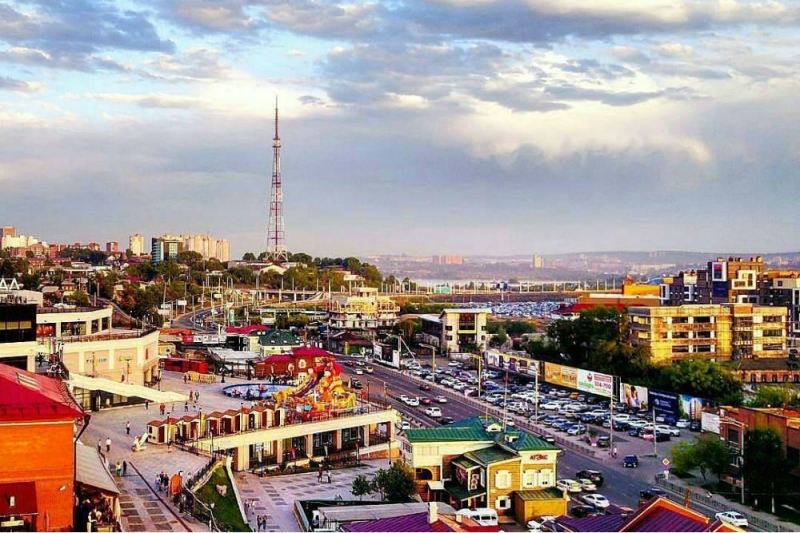
Irkutsk is one of the three capitals of wooden architecture in Russia. Due to the large concentration of wooden ancient monuments, the center of Irkutsk is also planned to be included in the UNESCO World Heritage List. By the way, before the revolution, Irkutsk for a long time was also the capital of a vast territory from the Trans-Urals to the Pacific Ocean. And even though today it is officially considered only the center of the region, the city still combines the metropolitan elegance and the cute charm of the province.
There are so many attractions in and around Irkutsk that a weekend may not be enough to explore them. But, if you try, here are the places worth visiting first.
- You can fly from Moscow to Irkutsk every day. Prices start from 5,284 rubles* one way. The flight lasts from 6 hours.
- 1 night in a hostel – from 400 rubles* or in a 3* hotel from 1,300 rubles*;
- The average bill in a cafe is 400 rubles;
- Walks around the city, travel on public transport, souvenirs – 800 rubles.
130th quarter (Irkutskaya Sloboda)
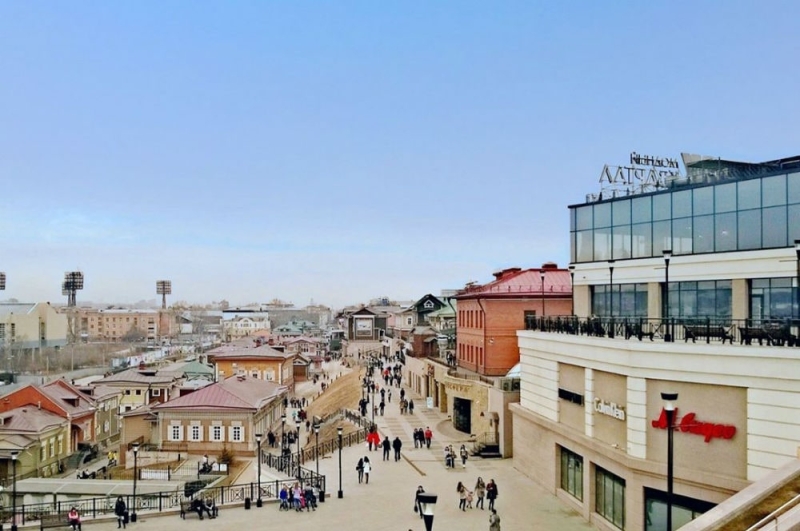
Photo: @my_irkutsk_38/Instagram.com
Irkutskaya Sloboda or the 130th quarter is one of the calling cards of Irkutsk – a public space with a total area of 5.7 hectares is restored historical buildings. Previously, on the site of the now fashionable quarter, there stood dilapidated wooden housing. The first houses on this land began to be built in the 18th century. In 2010, the city government decided to restore wooden architecture and for the 350th anniversary of Irkutsk, in 2011, the 130th quarter was inaugurated.
Now this is one of the most popular places in the city, there are dozens of all kinds of cafes, bars and restaurants for every taste, as well as many shops and souvenir shops.
In the 130th quarter there are also: a planetarium, the Window to Asia department of the local history museum, the DiaS gallery of contemporary art, the Experimentarium entertaining science museum, a second-hand bookstore and much more. In addition, the space of the block itself is conducive to a leisurely walk. In the finale, you can take a photo against the backdrop of the symbol of Irkutsk – the “Babr” statue.
Angara embankment

Photo: @my_irkutsk_38
Another place of attraction in Irkutsk is the Angara embankment, which gives the city center not only its beauty, but also fresh air. There are three parts where squares and public spaces are equipped – Upper Embankment, Gagarin Boulevard and Lower Embankment.
In the Upper Embankment area there is a small square, restaurants and shops. From here you have an excellent view of the hydroelectric dam. Closer to the center, from Kozhova Street to Glazkovsky Bridge, there is the pedestrian Gagarin Boulevard – one of the favorite places of the townspeople. At the intersection with Karl Marx Street, where the monument to Alexander III stands, there is a pedestrian bridge to the picturesque Yunost Island. Here you can rent bicycles and scooters, and go ice skating in winter. Another feature of the island is the Children’s East Siberian Railway, 3.25 kilometers long, where the whole family can ride on a miniature train, driven by schoolchildren under the guidance of instructors.
The last section is the Lower Embankment – the cradle of Irkutsk. It was on this coast that a detachment of Cossacks arrived in the 16th century together with their leader Yakov Pakhabov, as the monument to the “Pioneers” reminds of this. Nearby you can see the first stone building of the city – the Church of the Savior, as well as the Cathedral of the Epiphany and the Moscow Triumphal Gate restored in a new location. A little closer to the main square of the city – the park named after. Kirov – the Eternal Flame and the Church of the Assumption of the Virgin Mary, in which the organ hall of the Philharmonic is located.
Irkutsk Museum of the Decembrists and the House of Europe
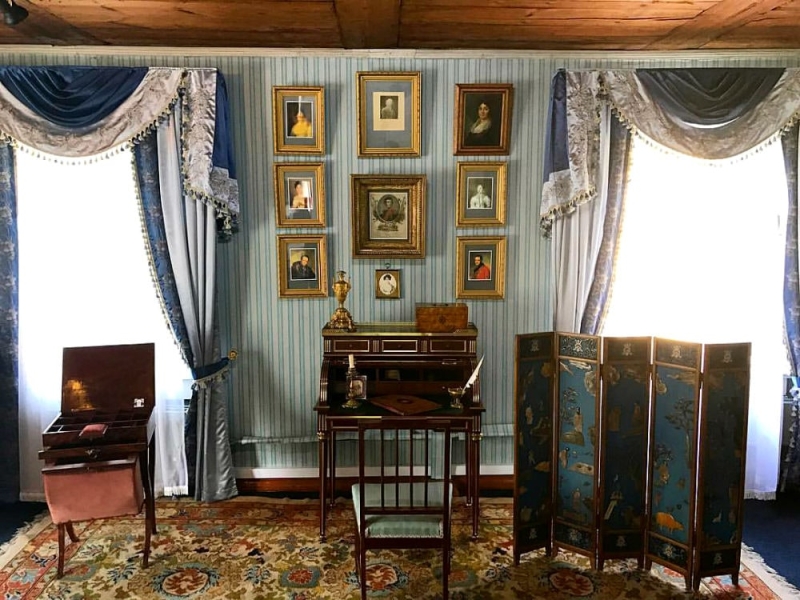
Photo: vk.com/irkmuzejdekabristovm
You can immerse yourself in the atmosphere of a noble estate at the Irkutsk Museum of the Decembrists. Two wooden mansions of the museum complex of princes Sergei Trubetskoy and Sergei Volkonsky are located a block from each other. In each of them, authentic items of the Decembrists are presented in historical interiors. Including the only working pyramidal piano in the world from the late 18th century, which belonged to Maria Volkonskaya.
The Volkonsky estate is located next to the Church of the Transfiguration of the Lord and the author’s theater-studio “Pilgrims” by Vladimir Sokolov. On the other side of the block is another of Irkutsk’s calling cards – the Shastina Estate, better known as the Lace House. The monument of wooden architecture looks very elegant thanks to the white wooden carvings, which effectively contrast with the dark wood of the facade. The mansion is part of the “House of Europe” complex, on the territory of which there are architectural monuments in which a cafe, a hotel and a Museum of Urban Life are located.
Address of the Volkonsky estate: lane. Volkonsky, 10
Opening hours: Tue – Sun 10:00 – 18:00, Monday – closed, last Tuesday of the month – sanitary day.**
Address of the Trubetskoy estate: st. Dzerzhinsky, 64
Opening hours: Wed – Mon 10:00 – 18:00, Tuesday – closed, Last Monday of the month – sanitary day.**
Site: imd38.ru
Visit cost: 200 rubles
V. Bronstein Gallery
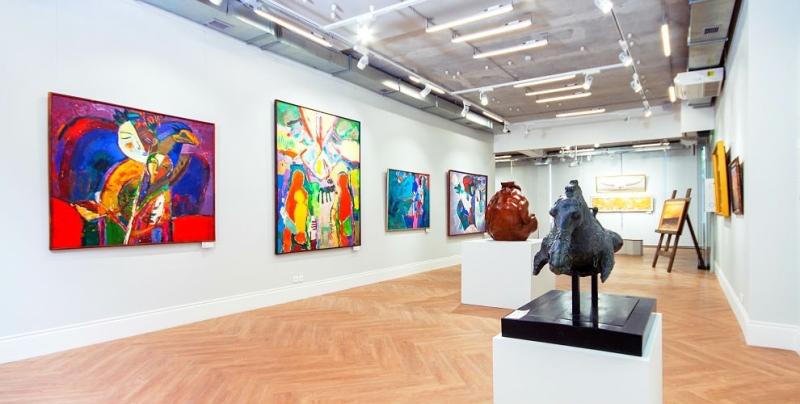
Photo: vbgallery.rum
The Gallery of Contemporary Art, founded by collector Viktor Bronstein, is a complex where, on an area of 1 thousand 300 square meters, there are three exhibition halls, a souvenir shop with original works of art and a restaurant. After getting acquainted with the artists’ work, you can have a cup of coffee, a glass of wine, a snack or a full meal at the BarDo Enoteca – with a unique opportunity to see the monumental works of the world famous sculptor Dashi Namdakov through the glass wall. By the way, this is the only permanent exhibition of his works in the world.
Enoteca BarDo itself combines a wine bar, gastronomic restaurant and lounge. The menu contains mainly local products – Baikal fish, veal from farms, pine nuts, prepared taking into account gastronomic trends.
Address: October Revolution, 3
Site: vbgallery.ru
Cost of visit: 150 rubles – adults; students, pensioners – 100 rubles.
Operating hours: daily 11:00 — 20:00**
Karl Marx Street
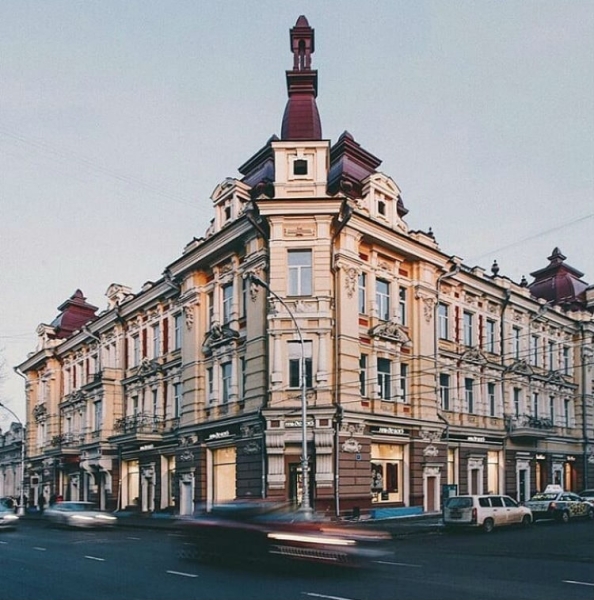
Photo: @irkstagram
The most beautiful street in Irkutsk is Karl Marx Street or, as it was called before the revolution, Bolshaya. It consists almost entirely of historical and architectural monuments, but not wooden ones, but stone ones. After all, most of these buildings were erected after the terrible fire of 1879, in which almost the entire city center burned down. The houses contain administrative and residential buildings, shops, educational institutions, clinics, restaurants, cafes, museums and theaters.
On the street there is a sculpture of a “tourist” looking at the roofs, because it is the second floors of the buildings here that are decorated with the most interesting decor: small sculptures, flowerpots, voluminous stucco. There is also a monument to Lenin and playwright Alexander Vampilov on Karl Marx.
This street is also one of the two main ones in the city. Moreover, closer to its intersection with the second central highway – Lenin Street – the most interesting objects are located. Among them are the former Russian-Asian Bank in the Art Nouveau style, the management of the Eastern Railway – a successful example of the Stalinist Empire style, the Drama Theater named after. N.P. Okhlopkova in the style of classicism and the Irkutsk Museum of Local Lore, built in the spirit of a Moorish castle.
Irkutsk Museum of Local Lore or Moorish Castle
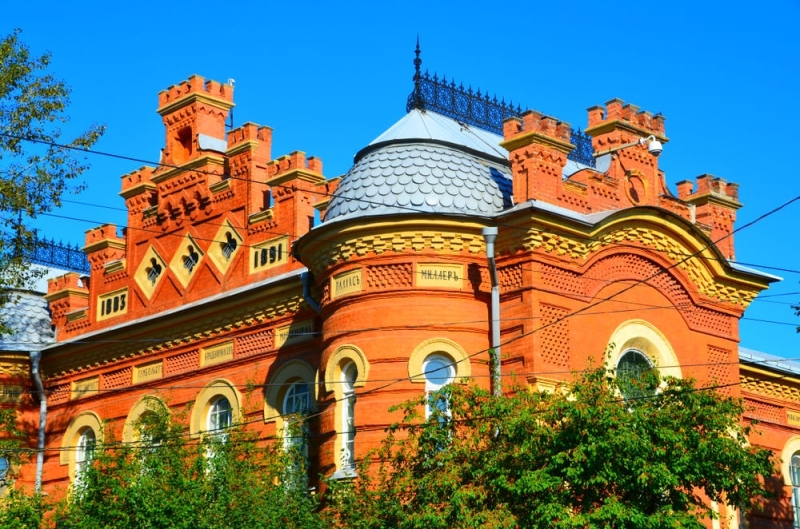
Photo: Ovchinnikova Irina/Shutterstock.com
In a building of rare beauty, which is also called the Moorish Castle, at the intersection of Karl Marx Street and Gagarin Boulevard, there is a history department of the local history museum. Only a few similar buildings have survived in Russia. The building looks like a small castle with four round red brick towers. At the entrance there is an interesting archeological monument, the so-called deer stone.
The building itself was erected in 1883 for the museum of the East Siberian Branch of the Russian Geographical Society, so it was here that Admiral Alexander Kolchak read his famous report on Toll’s expedition. Over the years, folklorist and Oriental explorer Grigory Potanin, the author of the novel “Sannikov’s Land” Vladimir Obruchev, the discoverer of Neanderthal burials academician Alexey Okladnikov, and the author of the method of reconstructing a person’s appearance from bone remains, Mikhail Gerasimov, worked in the museum. And today here you can feel the spirit of historical discoveries by visiting exhibitions on archaeology, ethnography and history of the 20th century.
Address: st. Karl Marx, 2
Social network page
Monument to Admiral Alexander Kolchak
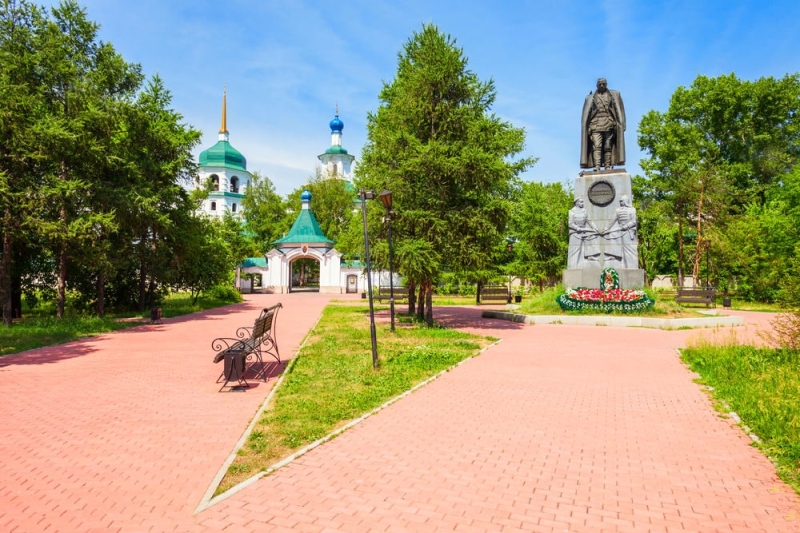
Photo: Shutterstock.com
Next to the Znamensky Monastery, in the park, there is a monument to the famous admiral and polar explorer Alexander Vasilyevich Kolchak. This place was chosen for a reason: it was here on February 7, 1920 that Kolchak was shot and his body thrown into an ice hole in the Angara.
“We must not allow that disaster to repeat itself, that’s why I made this monument. I call on you all to unite, precisely as a people, as citizens of one country,” a message from the author of the monument, sculptor Vyacheslav Klykov, to descendants.
Where it is: on the right bank of the Angara at the entrance to the Znamensky Monastery
Icebreaker “Angara”
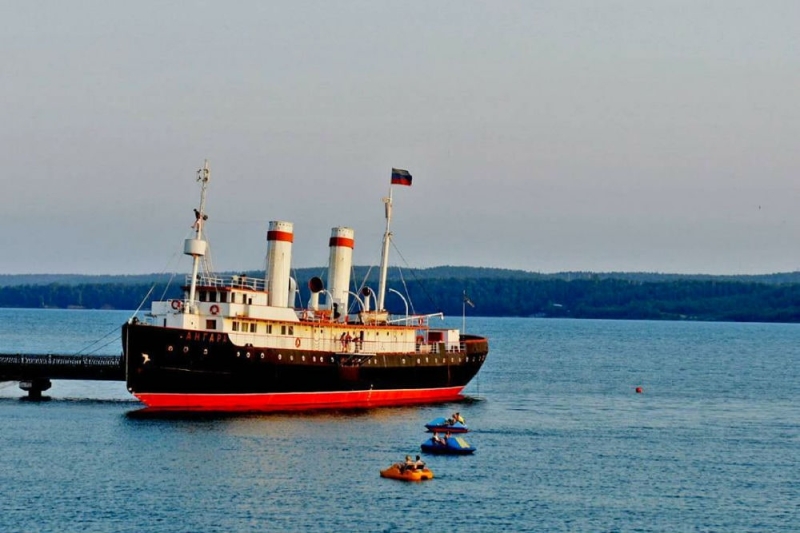
Photo: @sveta_kornblume/Instagram.com
The icebreaker “Angara” is a museum-ship that is moored on the shore of the Irkutsk reservoir in the Solnechny microdistrict. It is the oldest surviving icebreaker in the world. It was manufactured in Newcastle (Great Britain) and launched on July 25, 1900 in the village of Listvenichnoye. It was intended to lay a path in the ice for the Baikal ferry, which did not survive to this day. By the way, it was this icebreaker that allowed Russia to defend its Far Eastern territory during the Russo-Japanese War, because thanks to the ship it was possible to transfer a ground army and supplies to the east of the country.
Currently, the icebreaker has an exhibition about the history of navigation on Lake Baikal. During the tour you can explore the entire ship and even go down to the engine room. There is a cafe next to the ship. In the summer, there is a beach where you can sunbathe and, if desired, even swim. There are catamaran rentals. In winter there is an ice skating rink and slides. The place is also popular among skiers.
Address: Marshal Zhukov Avenue 36A/1
Social network page
Circum-Baikal Railway
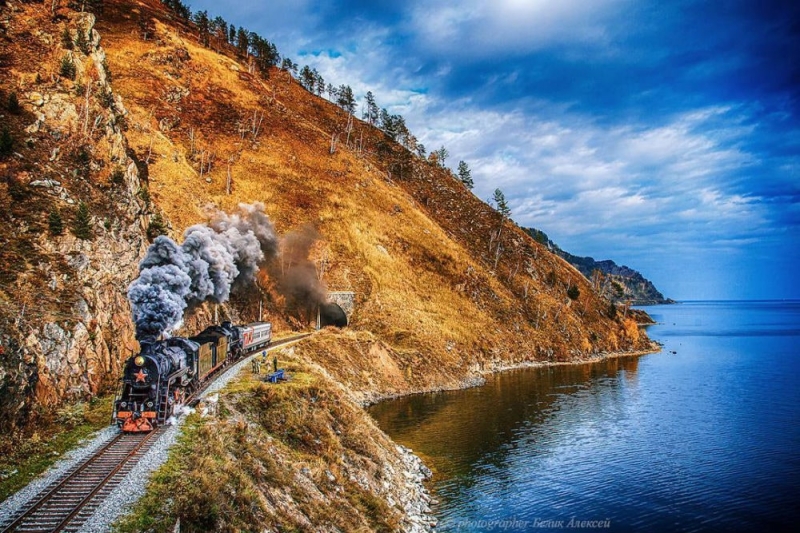
Photo: @aleksey_belik_fotographer
It was not by chance that the Circum-Baikal Railway was called the “Golden Buckle of Russia’s Steel Belt”, because it connected the Trans-Siberian Railway, which was broken by Baikal. The object is considered a unique monument of engineering architecture and is on the waiting list for inclusion in the UNESCO World Cultural Heritage List. By the way, in terms of the number of works per 1 kilometer of track and the difficulty of their implementation, the road surpasses all built rail tracks in the world. It is also rightfully considered the most beautiful of them, because it is laid among the rocks along a narrow strip of the Baikal coast.
You can still travel along it today. More precisely, along its 84-kilometer-long section. The Circum-Baikal Express departs from the railway station in Irkutsk.
From May to October there is an opportunity to explore the Circum-Baikal Railway from Lake Baikal on the motor ship “Barguzin”. It departs from Irkutsk from the Raketa pier weekly on Friday, Saturday and Sunday and in a day passes along the Angara to the Circum-Baikal Railway and further to Cape Polovinny.
Ticket price for the Circum-Baikal Express: from 3350 to 3800 rubles depending on the season
The cost of a ticket on the ship “Barguzin” needs to be clarified additionally by calling 8 (3952) 35-88-60 and 8 (3952) 287-287.
The ticket office is located at the Solnechny microdistrict, Zhukova Avenue 98 B, Raketa station – from 10:00 to 19:00; and st. Tsesovskaya embankment 1, stop. Household, “River Station” – from 12:00 to 18:00.
Listvyanka village
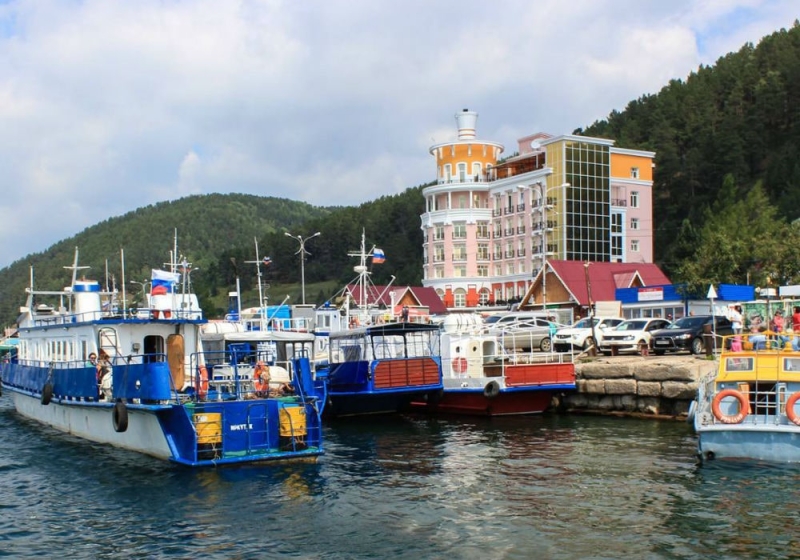
Photo: @denisubinin
Listvyanka is located 64 kilometers from Irkutsk. This is the closest place from Irkutsk where you can see Lake Baikal.
At the entrance to the village there is the Baikal Museum of the INC SB RAS. Here you can not only see a seal and get acquainted with the inhabitants of the lake, but also learn how the Baikal depression was formed millions of years ago, and even take a trip on a deep-sea bathyscaphe. Another center of attraction for tourists is the Shaman Stone – a piece of rock that is visible on the surface of the water in the place where the Angara flows out of the lake. According to legend, Baikal wanted to give his daughter in marriage to a young warrior named Irkut, but Angara fell in love with another hero, Yenisei, and ran away to him. Then the angry father threw a huge stone after her – that same rock.
In the village you can taste local fish delicacies in numerous cafes and restaurants, buy souvenirs in open areas and in shops. If you wish, you can spend the night in Listvyanka. The village has hotels for every taste and budget: from wooden houses with a Russian bathhouse to the fashionable Mayak Hotel on the shores of Lake Baikal.
How to get there: by bus from the bus station (October Revolution St., 11) at 07:00, 09:00, 11:00, 13:30, 16:00, 18:30. From Listvyanka at 09:00, 11:00, 14:00, 16:45, 18:00, 20:00. Cash desk opening hours: from 06:45 to 19:15. The fare is 90 rubles.
Minibuses to Listvyanka depart from the parking lot at the corner of October Revolution and Timiryazev streets (near the bus station) and from the parking lot at the central market. Departure time based on filling, from 8 am to 8 pm. The fare is 120 rubles.
Architectural and Ethnographic Museum “Taltsy”

Photo: @siggi12384/@umib0zu
One of the few open-air historical complexes in Russia, the Taltsy architectural and ethnographic museum, is located 47 kilometers from Irkutsk on the way to Listvyanka. On an area of 67 hectares in the picturesque Taltsinsky tract on the banks of the Angara, you can see unique monuments of the 17th-19th centuries. The basis of the museum’s exposition is the wooden buildings of small towns and villages in the Irkutsk region, which fell into the flood zone of the hydroelectric power station cascade on the Angara.
Currently, there are over 40 architectural monuments and more than 8 thousand exhibits on the territory of the museum. The complex has four historical and cultural zones: Russian old-timers, Buryat, Evenki and Tofalar. But perhaps the most unique object is the Ilimsky fort, the only wooden fortress in the world that has survived to this day.
The central place is occupied by the Spasskaya Tower – the symbol of the museum. In addition to the tower, inside the fortress there is the Kazan Church, three towers of the fort, a guest courtyard, an orderly and guard hut and a salt barn. Some of the buildings are being restored.
In “Taltsy” you can not only see interesting architectural structures, but also try your hand at blacksmithing and pottery, buy authentic souvenirs and taste Russian cuisine.
Museum website: talci-irkutsk.ru Operating hours: daily (March-October) 10:00 & ;#8212; 18:00, (November-February) 10:00 — 17:00 ** Cost of visit: 250 rubles – adults; children, students, pensioners – 100 rubles.
Book hotels on the website or through the OneTwoTrip app.
* Prices for travel and accommodation are indicated at the time of writing. The cost indicated in the material and the final price may vary depending on the season and time for which tickets are purchased.
**Operating hours of organizations are indicated at the time of publication of the text. Opening hours may vary depending on the time of year.
Text author: Elena Orlova
Preview photo: @nickolai_tarkhanov

